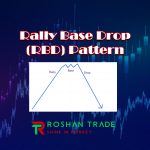Day traders are referred to as those who start investing with quick profits and high excitement and do not have any open trades at the end of the day. This draws many people towards this style, allowing them to sleep soundly at night, but it’s not that easy; however, it’s not impossible either.
With practice, knowledge, and strategic planning, you can become a day trader who takes advantage of market fluctuations to maximize profits in the shortest time possible. You will face many challenges, but persistence is your only solution to deal with those who want you to fail in the market. You need to have a thorough understanding of different trading strategies, risk management techniques, and market dynamics to consider yourself a day trader.
Before we discuss the strategies, let’s get to know a bit more about day trading. Day trading involves buying and selling financial instruments within the same trading day, typically focusing on stocks, futures, and currencies. Unlike long-term investors, day traders do not hold their positions overnight and instead seek to capitalize on short-term market price fluctuations. Remember that a successful day trader progresses with liquidity, volatility, and timing.
We mentioned that a successful day trader progresses with liquidity. To analyze this statement more precisely, we must recognize its primary phenomenon.
Before discussing specific strategies, let’s explain what day trading is. Day trading involves buying and selling financial instruments within the same trading day, often focusing on stocks, options, futures, and currencies.
Liquidity is essential for day traders, providing the ability to enter and exit positions quickly without significantly affecting the asset prices. On the other hand, volatility creates opportunities. Significant price volatility means a higher potential for profit, but it also comes with the risk of substantial losses. Therefore, timing plays a vital role, as traders must quickly react to market movements and news events to achieve their goals swiftly and without incurring losses, much like a snake expert navigating through challenges.
Reading Suggestion: What is PAZ
| Term | Definition |
|---|---|
| Liquidity | Refers to how easily an asset can be bought or sold without affecting its price. |
| Volatility | Indicates the degree of price variation of a trading instrument; higher volatility means larger price swings. |
| Timing | The strategy of entering and exiting trades in response to market movements and news. |
Essential Day Trading Strategies

1. Scalping
Scalping is the first day trading strategy that allows you to open and close trades quickly and make a decent profit at the end of the day with a high number of trades and small profits. Scalpers are people who make the proverb “little by little” come true.
Most of their trades last a few seconds to a few minutes, meaning they seek to exploit minor price fluctuations rather than long-term movements. This strategy requires precision and attention to detail, as traders must analyze charts and data almost instantly and enter and exit trades at the right moment.
Advantages of Scalping:
- Quick Profits: Traders can accumulate profits quickly from small price movements.
- Frequent Trades: Engaging in numerous trades can improve overall profit potential.
Challenges of Scalping:
- High Transaction Costs: Frequent trades may incur significant commissions and fees.
- Stressful Environment: The fast-paced nature requires strong focus and mental stamina.
| Pros | Cons |
|---|---|
| Quick profit potential | High transaction costs |
| Frequent trading | Stressful environment |
| High liquidity | Requires constant monitoring |
2. Momentum Trading
Another popular strategy is momentum trading, in which traders believe that assets with a strong price trend tend to continue moving in that direction. That is, when a currency or stock is in a downtrend and a strong move has begun, traders open short positions and move in the same direction as the price. Technical indicators such as the Moving Average Convergence Divergence (MACD) or the Relative Strength Index (RSI) often help identify entry points.
Benefits of Momentum Trading:
- Potentially Large Gains: Capturing significant price movements can yield considerable profits.
- Market Trends: Momentum traders can benefit from broader market trends.
Drawbacks of Momentum Trading:
- Risk of Reversal: Prices are subject to abrupt reversals, leading to potential losses.
- Requires Quick Decision Making: Traders must act rapidly to benefit from momentum.
| Pros | Cons |
|---|---|
| Potentially high returns | Risk of sudden reversals |
| Ability to ride market trends | Quick decision-making required |
| Often supported by strong data | May require extensive market research |
3. Breakout Trading
But what is breakout trading? This is one style that has lost its fans these days because it is a bit difficult. In this style, you need to identify key price levels where stocks have historically reversed direction. This step is easy, then you need to know which levels are worth the risk to enter the trade.
A breakout occurs when the price breaks above a resistance level or below a support level, indicating potential momentum. Traders often place stop losses on long positions below resistance and short positions above support to effectively manage risk.
Benefits of Breakout Trading:
- High Reward-to-Risk Ratio: Successful breakouts can lead to significant price increases.
- Clear Entry and Exit Points: Defined levels provide clarity for trade execution.
Drawbacks of Breakout Trading:
- False Breakouts: Sometimes prices pull back after a breakout, leading to losses.
- Market Noise: In a volatile market, price movements can be misleading.
| Pros | Cons |
|---|---|
| Clear entry and exit signals | Risk of false breakouts |
| Opportunity for significant gains | Market noise can mislead |
| High reward to risk potential | Requires patience and monitoring |
4. Reversal Trading
Reversal trading predicts a change in the direction of a stock’s price after a long-term trend. This means that you can predict a reversal before the price reverses and make a big profit from it. By identifying overly long positions or changes in market sentiment, along with news and technical analysis from the market, traders can enter trades expecting prices to return to their mean values. Common indicators for reversal trading include Bollinger Bands and RSI.
Advantages of Reversal Trading:
- High Profit Potential: Successful reversals can deliver substantial returns.
- Capitalizes on Market Psychology: This strategy often aligns with market sentiment shifts.
Disadvantages of Reversal Trading:
- Requires Patience: Waiting for confirmation can be frustrating for some traders.
- Risky: Misjudging the timing can lead to substantial losses.
| Pros | Cons |
|---|---|
| Significant profit potential | Requires patience |
| Engages with market psychology | Misjudgment can lead to losses |
| Can be less frequent than others | Confirmation may take time |
The Critical Importance of Risk Management
Whoever you are, whatever strategy you have, or whatever way you know how to trade the market, you can’t survive in this market without managing your risk. Risk management is critical to long-term success. A trader’s first responsibility is to protect their capital by employing sound risk management techniques. As the old saying goes, “It’s not how much you make, it’s how much you keep.”
Key principles of risk management for day traders include:
- Setting Stop-Loss Orders: A stop-loss order limits potential losses by automatically closing a position at a specified price.
- Defining Position Size: Determine your allocation for each trade. A common guideline is to risk no more than 1-2% of your total trading capital on a single trade.
- Maintaining a Trading Journal: Documenting trades enhances self-awareness and allows for performance analysis and strategic improvements over time.
| Risk Management Techniques | Purpose |
|---|---|
| Setting stop-loss orders | Limits potential losses |
| Defining position size | Controls risk exposure to a manageable level |
| Keeping a trading journal | Enhances analysis and strategic improvement |
Developing Your Trading Plan
A well-structured trading plan serves as a roadmap for every trader, outlining strategies, goals, and risk management practices. By clearly defining your trading goals, styles, strategies, and risk tolerance, you create a framework to guide your decisions. Your trading plan should, at a minimum, address the following components:
- Target Markets: Identify the markets you want to trade in and understand their specific dynamics.
- Strategies: Outline the precise strategies you will employ and under what conditions.
- Risk Management Policy: Establish your rules for risk management, including how much capital you are willing to risk on each trade.
- Review Process: Schedule regular reviews of your trading performance for refinement and growth.
| Component | Description |
|---|---|
| Target markets | Define which assets or markets to trade |
| Specific strategies | Outline your entry/exit strategies and criteria |
| Risk management policy | Set rules regarding stop-losses and position sizes |
| Review process | Regularly analyze trade performance and adjust strategies as needed |
Conclusion
You have become familiar with the different types of day trading strategies and you have learned what their features are, what their differences are, and you have also become familiar with their strengths and weaknesses. In this article, our intention was to familiarize you with these strategies as much as possible so that if you intend to become a day trader, you can choose the right strategy for you. Now tell me, which of these strategies have you worked with or would you like to work with?








